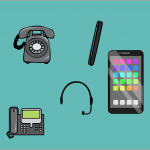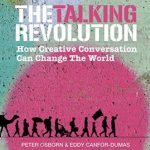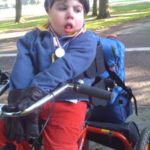Communication Resources

What Is Communication?
Communication goes beyond what you say and how you say it, it is also about how you act. For example, do you greet people warmly, with a friendly manner, or do you make it clear you are busy and give the impression you have more important things you could be doing? Do you ask them questions about themselves or primarily talk about yourself? Do you listen to learn, or listen to reply?
Listening is arguably the most important part of good communication. Learning the skill of Active Listening promoted worldwide by The Samaritans. This way of listening supports people when they talk about issues causing them worry or concern.
Communicating with everyone
At different times most of us will communicate with people from all walks of life, from babies to the elderly and from diverse backgrounds economically, socially and culturally.
Asking not assuming is a good approach generally when communicating. For example, don’t assume a disabled child lacks understanding or an individual who appears to you to be from a particular ethic group will think in a particular way or want particular things, ask. Don’t use ‘Elderspeak’ when communicating with older individuals, as the British Medical Association explain, ‘similar to baby talk and is frequently characterised by slow, loud speech using exaggerated intonations, a repetitive and simplistic vocabulary as well as diminutives and intimate terms of endearment‘.
Treat individuals as individuals, with respect and dignity, not as a ‘type’.
Some Communicating with everyone resources
 Peter Osborn and Eddy Canfor-Dumas (2019) published by Port Meadow Press.
Peter Osborn and Eddy Canfor-Dumas (2019) published by Port Meadow Press.
The authors write ‘We need a massive, worldwide improvement in how we commuicate. How we talk to each other. How we listen to each other. How we understand and are understood by each other’.
What Great Listeners Do

Shared with thanks to and permission of copyright owner Tanmay Vora @tnvora
Communicating with Children and Young People
Article 12 United Nations Convention on the Rights of the Child gives children and young people (those under 18 years) a legal right to be listened to in international law.
Article 12
1. States Parties shall assure to the child who is capable of forming his or her own views the right to express those views freely in all matters affecting the child, the views of the child being given due weight in accordance with the age and maturity of the child.
2. For this purpose, the child shall in particular be provided the opportunity to be heard in any judicial and administrative proceedings affecting the child, either directly, or through a representative or an appropriate body, in a manner consistent with the procedural rules of national law.
UNCRC General Comment: Right of the child to be heard
The General Comment provide guidance to State Parties and institutions as to how this right should be implemented. You can hear Adam speaking about Article 12 from the link below under ‘Adam’s Communication’.
Communicating with disabled individuals
Most importantly do not make assumptions, particularly not prejudicial assumptions. If you are struggling to communicate, ask the individual how best to communicate with them. If you are unable to do so, ask someone who knows the individual well. Don’t assume that your inability to communicate with a disabled individual means they can not communicate, it is likely that you just don’t know how to best to communicate with that individual.
The United Nations Convention on the Rights of Persons with Disabilities (UNCRPD) also creates duties for State Parties and state funded organisations which support the communication rights of disabled people:
Article 4 (General Obligations) includes a right for disabled people and a duty on States and State bodies (including health and social care bodies) to:
1(h)To provide accessible information to persons with disabilities
about mobility aids, devices and assistive technologies, including new
technologies, as well as other forms of assistance, support services and
facilities;
Article 7 (Children with disabilities) includes a duty on States and State bodies to:
3. States Parties shall ensure that children with disabilities have the right to
express their views freely on all matters affecting them, their views being
given due weight in accordance with their age and maturity, on an equal basis
with other children, and to be provided with disability and age-appropriate
assistance to realize that right.
Article 9 (Accessibility) also includes a disabled person’s right to technology to enable him or her to communicate:
Article 9 (Accessibility)
1. To enable persons with disabilities to live independently and participate
fully in all aspects of life, States Parties shall take appropriate measures to
ensure to persons with disabilities access, on an equal basis with others, to the
physical environment, to transportation, to information and communications,
including information and communications technologies and systems, and to
other facilities and services open or provided to the public, both in urban and
in rural areas. These measures, which shall include the identification and
elimination of obstacles and barriers to accessibility, shall apply to, inter alia:
(a) Buildings, roads, transportation and other indoor and outdoor
facilities, including schools, housing, medical facilities and workplaces;
(b) Information, communications and other services, including
electronic services and emergency services.
Article 21 (Freedom of expression & opinion & access to information), sets out in further detail the steps State Parties and state bodies should take to fulfil a disabled person’s right to express their opinion and access information.
States Parties shall take all appropriate measures to ensure that persons
with disabilities can exercise the right to freedom of expression and opinion,
including the freedom to seek, receive and impart information and ideas on an
equal basis with others and through all forms of communication of their
choice, as defined in article 2 of the present Convention, including by:
(a) Providing information intended for the general public to persons
with disabilities in accessible formats and technologies appropriate to different
kinds of disabilities in a timely manner and without additional cost;
(b) Accepting and facilitating the use of sign languages, Braille,
augmentative and alternative communication, and all other accessible means, – 15 –
modes and formats of communication of their choice by persons with
disabilities in official interactions;
(c) Urging private entities that provide services to the general public,
including through the Internet, to provide information and services in
accessible and usable formats for persons with disabilities;
(d) Encouraging the mass media, including providers of information
through the Internet, to make their services accessible to persons with
disabilities;
(e) Recognizing and promoting the use of sign languages
Some Communicating with disabled individuals resources
Appropriate Language. These resources give some guidance of appropriate, inclusive language to use when talking about disability. Remember, however, that individuals will have personal preferences as to the language which should be used when talking with or about them.
Mencap, Communicating with people with a learning disability accessed July 2021
Some popular alternative communication methods
British Sign Language
Makaton
Inclusive Technology are a commercial supplier of communication hard and software to assists disabled people. AdsFoundation recommend them because the staff are extremely knowledgeable and helpful. Adam also found it was the only source of educational and fun software for use with a blink switch or similar for children and young people (and adults) who do not have learning disabilities, as well resources for those with learning disabilities.
Adam’s Communication
Adam’s main method of communication was by blinking. His mum Dr Zoe Picton-Howell explained how Adam developed his ability to communicate so well by blinking in this 2012 article ‘Determination and Talent’ she wrote for Special Children Journal.

Adam’s Spelling Chart
Adam used several methods to communicate, including a blink switch designed especially for him by the University of Edinburgh, word lists, where he would blink to choose words from lists, his iPad voice and his spelling chart.
The spelling chart had the letters of the alphabet in five rows, with each row starting with a vowel. This meant that rather than someone who was scribing for Adam having to read the whole alphabet for Adam to blink at a letter when spelling a word, Adam could first be asked which row the letter was in and then just that row read out by the scribe, for Adam to blink at his chosen letter.
Adam could also use his blink communication to answer multiple choice questions, which enabled him to convey complex ideas and thoughts. It was important how these questions were phrased. Key points included ensuring Adam knew what all the options were before he answered the question. So to take a simple example, if asking if Adam wanted to wear his red, his blue, or his striped jumper, we would say: ‘Adam I’ll tell you the options first and then repeat the options and you blink for the one you want. Adam do you want to wear your red, blue or striped jumper, Red (leave time for Adam to blink), Blue (leave time for Adam to blink or striped (leave time for Adam to blink)’. Obviously once Adam has made his choice the further options do not need to be repeated. A common error we saw healthcare staff and others make was to say to Adam ‘do you want to wear your red, blue or striped jumper’? without giving the opportunity for Adam to blink for his choice. It was also important to include ‘or something else‘ as one of the options presented to Adam so that he could choose for himself, rather than have other’s options imposed upon him. If Adam’s choice was ‘something else‘, then further questions were needed to establish what this ‘something else‘ was.
The biggest barrier we found to Adam’s communication was prejudicial assumptions. It is noteworthy and curious that the only people who ever claimed not to be able to understand Adam were some paediatricians. Family, friends, teachers, therapists, classmates, nurses, GPs, dentists, shop-keepers, authors Adam met at book festivals and journalists, as this interview with Adam on BBC Radio Leeds illustrates and everyone else, all communicated with Adam without problem, even having just met him, needing no more than a brief and simple explanation from us or whoever was with Adam, as to how he communicated.
 Before he became seriously ill Adam spoke about Article 12 UNCRC in a training film made and used by Children’s Rights Organisations.
Before he became seriously ill Adam spoke about Article 12 UNCRC in a training film made and used by Children’s Rights Organisations.
You can access more communication resources dealing specifically with communication in health and social care on our healthcare communication resources page.
We welcome your feedback on this and all our resources, including information of any additional resources we should include or any changes you think we should make to our existing resources. Please use the CONTACT US tab above to share your thoughts with us. Thank you

BACK TO Adam’s Writing
FORWARD TO Literacy Resources & Useful Organisations


 Peter Osborn and Eddy Canfor-Dumas (2019) published by Port Meadow Press.
Peter Osborn and Eddy Canfor-Dumas (2019) published by Port Meadow Press.

 Before he became seriously ill Adam spoke about Article 12 UNCRC in a
Before he became seriously ill Adam spoke about Article 12 UNCRC in a 